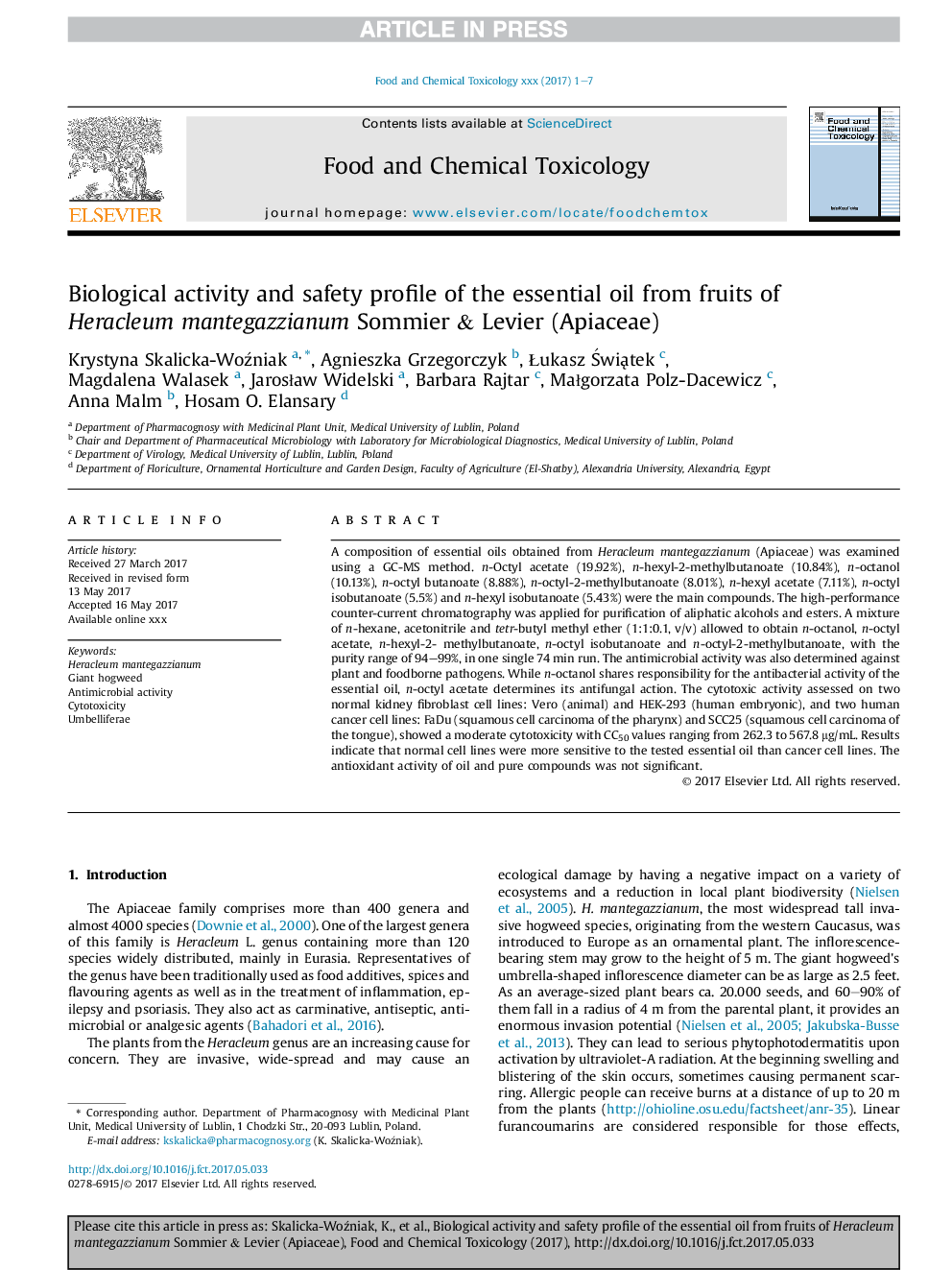| Article ID | Journal | Published Year | Pages | File Type |
|---|---|---|---|---|
| 8548773 | Food and Chemical Toxicology | 2017 | 7 Pages |
Abstract
A composition of essential oils obtained from Heracleum mantegazzianum (Apiaceae) was examined using a GC-MS method. n-Octyl acetate (19.92%), n-hexyl-2-methylbutanoate (10.84%), n-octanol (10.13%), n-octyl butanoate (8.88%), n-octyl-2-methylbutanoate (8.01%), n-hexyl acetate (7.11%), n-octyl isobutanoate (5.5%) and n-hexyl isobutanoate (5.43%) were the main compounds. The high-performance counter-current chromatography was applied for purification of aliphatic alcohols and esters. A mixture of n-hexane, acetonitrile and tetr-butyl methyl ether (1:1:0.1, v/v) allowed to obtain n-octanol, n-octyl acetate, n-hexyl-2- methylbutanoate, n-octyl isobutanoate and n-octyl-2-methylbutanoate, with the purity range of 94-99%, in one single 74 min run. The antimicrobial activity was also determined against plant and foodborne pathogens. While n-octanol shares responsibility for the antibacterial activity of the essential oil, n-octyl acetate determines its antifungal action. The cytotoxic activity assessed on two normal kidney fibroblast cell lines: Vero (animal) and HEK-293 (human embryonic), and two human cancer cell lines: FaDu (squamous cell carcinoma of the pharynx) and SCC25 (squamous cell carcinoma of the tongue), showed a moderate cytotoxicity with CC50 values ranging from 262.3 to 567.8 μg/mL. Results indicate that normal cell lines were more sensitive to the tested essential oil than cancer cell lines. The antioxidant activity of oil and pure compounds was not significant.
Related Topics
Life Sciences
Agricultural and Biological Sciences
Food Science
Authors
Krystyna Skalicka-Woźniak, Agnieszka Grzegorczyk, Åukasz ÅwiÄ
tek, Magdalena Walasek, JarosÅaw Widelski, Barbara Rajtar, MaÅgorzata Polz-Dacewicz, Anna Malm, Hosam O. Elansary,
